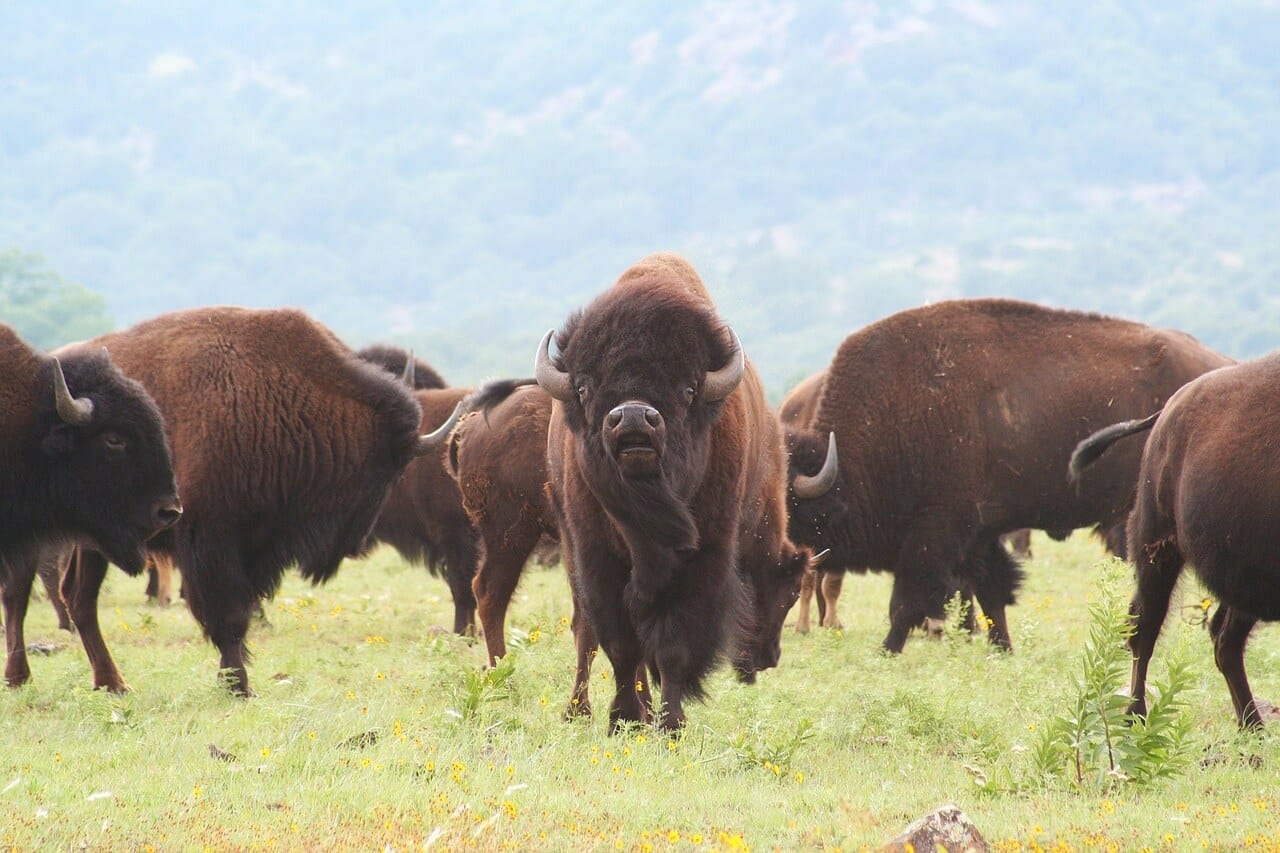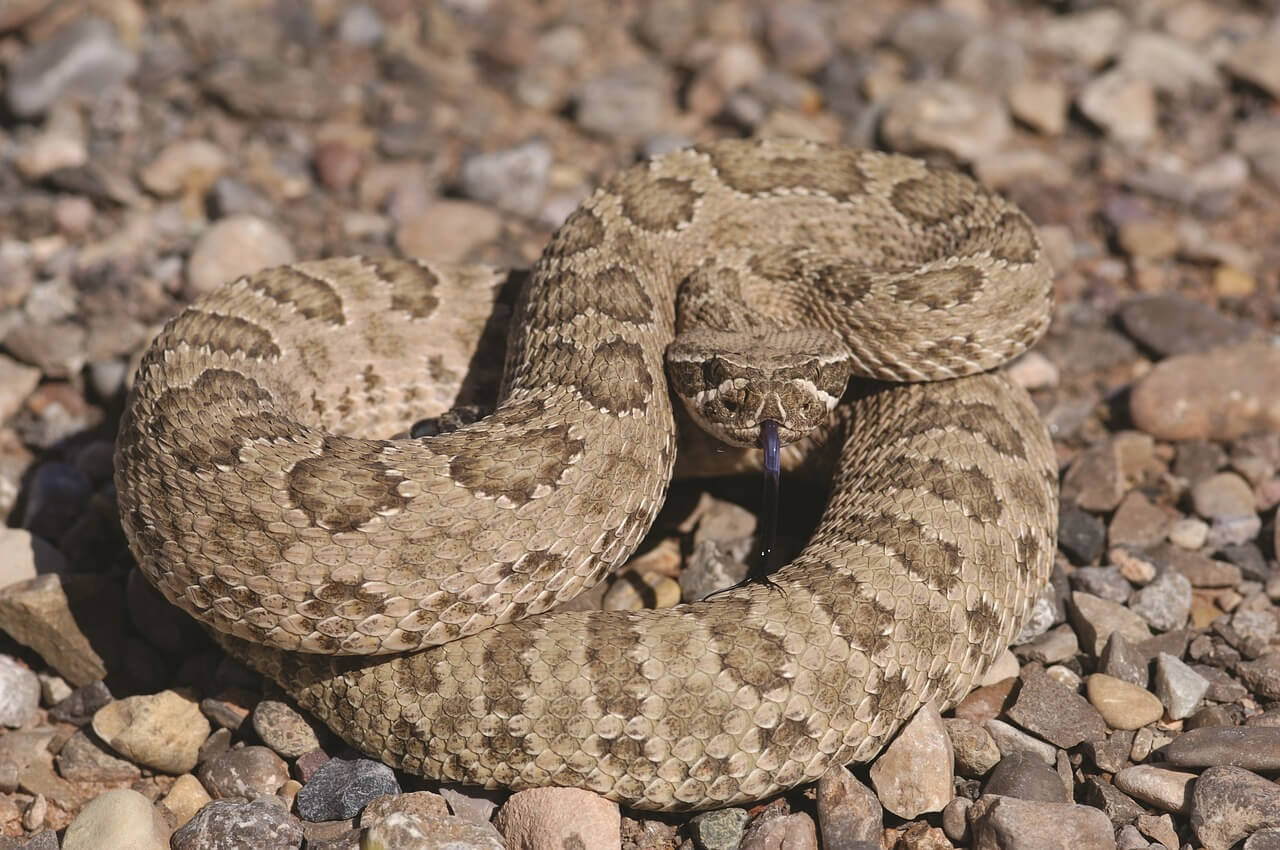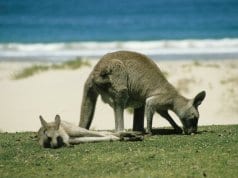Yellowstone National Park is one of the most iconic protected areas in the entire world. Established in 1872, Yellowstone was the first national park in the United States, and it is typically recognized as the first national park in the world too. World famous for its wildlife and unique geological features, Yellowstone draws more than 4 million visitors each year.
We’ll discuss some of the most notable wildlife species found in the park below. We’ll also explain a few tips for maximizing your viewing opportunities.
Yellowstone: A Haven for Megafauna
A number of very large animals call Yellowstone home.
Yellowstone’s gigantic mammals are some of the most popular attractions in the park.

You’ll have the chance to view the park’s resident elk, pronghorn antelope, mule deer and moose. Additionally, you’ll have the chance to see the park’s bison herd. In fact, Yellowstone’s bison herd is the largest public herd of bison in the United States.
While bison, elk and deer are very easy to observe, some of the other hoofed animals living in the park are harder to spot. For example, moose are are hard to find, as are the park’s pronghorn antelope.
The Wolves of Yellowstone
Yellowstone National Park is one of the few places in the United States with a healthy wolf population.
Yellowstone is not only home to one of the largest bison populations in the world, it is also home to one of the biggest wolf populations in the lower 48 states. Humans first reintroduced wolves to the area in the mid-90s, and they continue to thrive in the park to this very day.

Roughly 100 to 120 wolves live within the park’s borders, and nearly three times as many inhabit the larger ecosystem. Each of these individuals are the descendants of the original 66 wolves that were released inside the park in the 90s.
A Bounty of Bears
Two different bear species roam Yellowstone and play important roles in the park’s ecosystems.
Although Yellowstone’s bison herds are the most famous wildlife living within the park, the bears living within the park are also quite iconic. After all, the famous cartoon character Yogi Bear was said to live in Jellystone National Park – an obvious allusion to Yellowstone.

Black and grizzly bears inhabit the park. Many people see the former, but relatively few see the latter. Unfortunately, many visitors have decided to feed the black bears over the years. This has led to a number of unpleasant and dangerous encounters. This practice endangers the bears and people, so refrain from ever feeding the bears (or any other wildlife within the park).
Cold-Hardy Ectotherms
Despite the park’s cool climate, several reptile and amphibian species thrive in the region.
Ectothermic (“cold-blooded”) animals are rare in the Northern Rocky region, but Yellowstone does host a few species.

The painted turtle is one of the most numerous reptiles in the park. They frequently bask on rocks emerging from the water, so they’re quite easy to see. Only one venomous snake – the prairie rattlesnake – lives within the park’s borders. Fortunately, as with most other venomous snakes, the prairie rattler typically seeks to avoid conflict.
Four amphibians also inhabit the park. The boreal chorus frog is one of the most notable, as their calls echo through the night during the warmer portions of the year.
Wildlife Spotting Tips
Wildlife sightings are never guaranteed, but by employing the following tips, you’ll increase your chances.
It can be difficult to find some of the iconic animals in some other national parks, but Yellowstone usually makes it easy to do so. Nevertheless, you’ll improve your chances of spotting some of the park’s most fascinating animals by embracing the tips below.
- Leverage technology to help track the animals. Many visitors will post notable animal sightings on social media. So, search the common social media platforms for mentions and note the locations in which the animals were seen.
- Look for predators at dawn and dusk, but focus on bison and other large herbivores during the middle of the day. Wolves and other predators often hide during the middle of the day when human activity peaks. However, bison are often active during these times.
- Always follow the posted rules regarding wildlife viewing. Many of the animals living in Yellowstone are large and capable of causing serious injury or even death. Never approach any of the animals in the park, as even the most peaceful-looking individuals can act in unpredictable ways. This is especially true of elk and bison.
- Have one member of your party scan the valleys with binoculars while driving around the park. Exploring Yellowstone requires visitors to drive quite a bit, so make the most of this time by having one of the people in your car (obviously not the driver) keep an eye out for wildlife while you’re on the move.
Finally, focus your efforts on the portions of the park that the animals frequent. Yellowstone is an immense park that covers nearly 3,500 square miles and includes parts of Montana, Wyoming and Idaho. A few portions of the park – notably the Lamar, Hayden and Pelican valleys – typically provide the best chance to spot a variety of species.

Any list of world-famous parks must include Yellowstone. It is surely one of the most important parks for nature lovers to visit at some point in their lives. The park is a treasure, and it gives visitors the opportunity to see how the American West looked thousands of years ago.
Have you ever had the chance to visit Yellowstone National Park? We’d love to hear about your experience. Tell us all about the park and any wild animals you had the chance to observe in the comments below.














![Red Angus Closeup of a beautiful Red Angus cowPhoto by: U.S. Department of Agriculture [pubic domain]https://creativecommons.org/licenses/by/2.0/](https://animals.net/wp-content/uploads/2020/03/Red-Angus-4-100x75.jpg)

